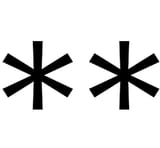>>105711718
think of it as a shop catalog
brick is the data, let's say it's a purple brick
catalog saying "pick up your brick on this shelf" is pointer to data, it doesn't know that the brick is purple but it knows that it's brick-type
a line in catalog's table of contents saying "bricks, page 5" is a pointer to pointer to pointer, it points to page 5 that points to shelf where our purple brick resides
someone can change the brick to yellow, but you'll still have the same catalog so you'll find your brick
new edition of the catalog can change the shelf it tells you to pick up bricks from, but table of contents can stay the same since it's all still on page 5








